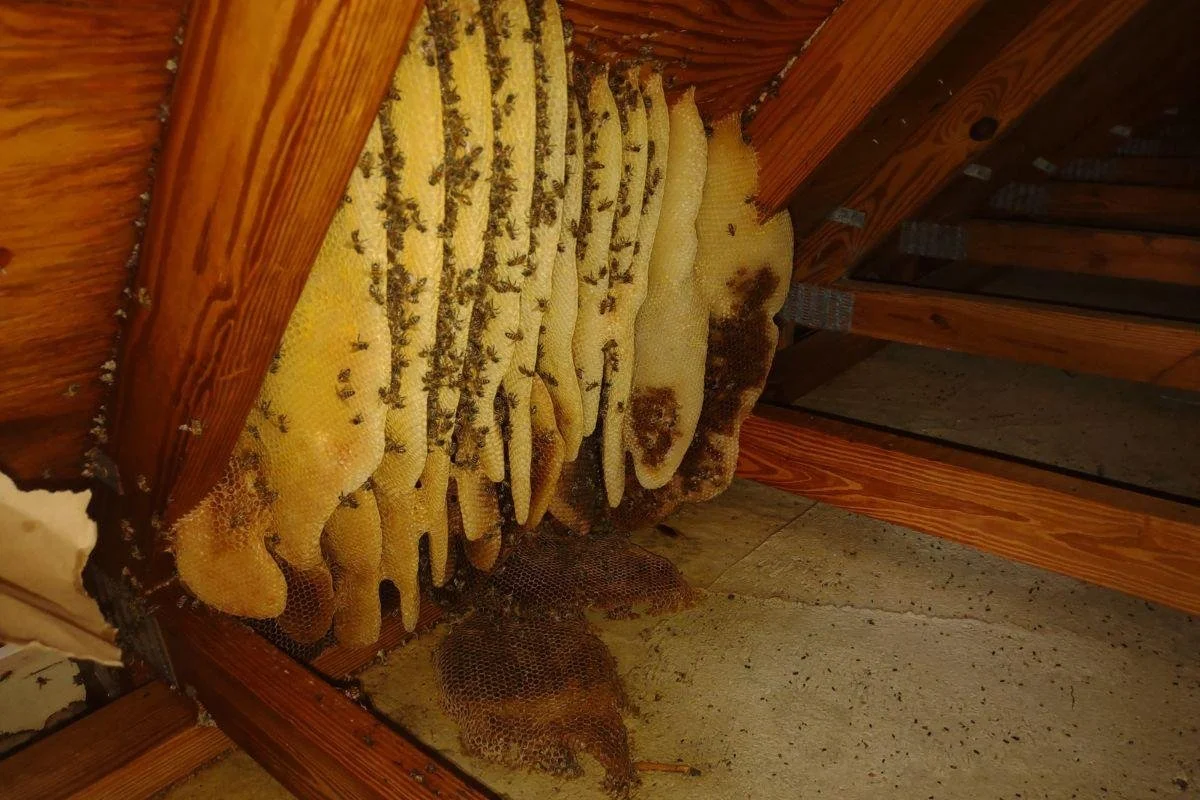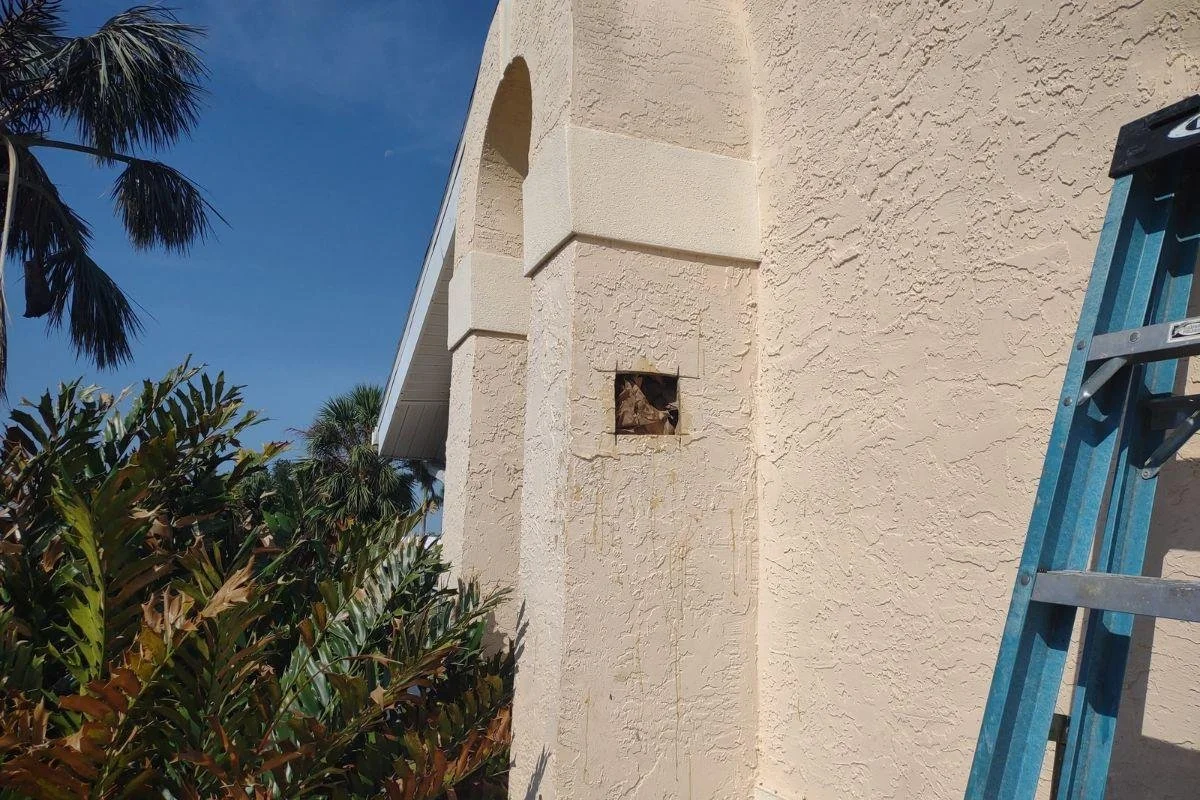When Do Bees Usually Swarm in Florida? A Seasonal Guide.
Florida’s warm climate makes it a perfect home for honey bees. While bees play a vital role in pollination and biodiversity, homeowners are often caught off guard when they suddenly see a buzzing cloud of bees moving together — a phenomenon known as swarming.
So, when exactly do bees swarm in Florida? How can you prepare for it, and what should you do if it happens near your home? In this guide, we’ll break down everything you need to know about the bee swarming season in Florida, what causes it, and how to respond safely and responsibly.
What Is Bee Swarming?
Large honeybee hive with honeycomb
Swarming is a natural part of a honey bee colony’s life cycle. When the colony becomes too crowded or the hive conditions are no longer ideal, the queen bee and about half the worker bees leave the old hive in search of a new home. This swarm can consist of thousands of bees moving together in a buzzing, flying ball, which can look scary but is usually not aggressive.
Swarming is a sign of a healthy, reproducing colony, but it can become a problem when the bees settle inside homes, walls, attics, or other unwanted places.
When Is the Bee Swarming Season in Florida?
Florida’s unique climate allows bees to remain active almost year-round, but swarming activity peaks during spring and early summer, especially between:
Late March to Early July
Here’s a breakdown of bee activity by season:
Spring (March–May): This is prime swarming season in Florida. Rising temperatures, blooming flowers, and increased nectar availability make spring the ideal time for colonies to split and relocate. Beekeepers and bee removal experts observe a sharp increase in swarming activity during this period.
Summer (June–August): Swarming can still happen in early summer, especially during mild weather and after rainfall. However, extreme heat may cause colonies to focus more on cooling the hive than on swarming.
Fall (September–November): Swarming becomes less common as bees prepare their hives for cooler months. Some late swarms may still occur, but it’s not typical.
Winter (December–February): Bee activity significantly slows down. Swarming is very rare unless there’s an unusually warm winter. However, bees may still be found foraging on warm days.
Why Do Bees Swarm?
Understanding why bees swarm can help prevent it from happening near your home. Here are the most common reasons:
Overcrowding: A strong colony can outgrow its hive.
Old or Failing Queen: The colony raises a new queen, prompting the old one to leave.
Poor Ventilation: High humidity or heat inside the hive can cause discomfort.
Instinctual Reproduction: Swarming is the colony’s way of multiplying and spreading.
Where Do Swarms Go?
Bee colony discovered behind a stucco wall
When bees swarm, they often land temporarily on:
Tree branches
Fences
Roof edges
Under decks or patios
Sides of buildings
They’ll usually send out scout bees to search for a new, permanent location. If they find a wall cavity, attic, chimney, or soffit in your home, they might move in fast.
That’s why it’s important to act quickly and call a professional live bee removal service if you see a swarm resting near your home.
What to Do If You See a Bee Swarm in Florida
It’s natural to panic when you see thousands of bees clustered together, but here’s what you should do (and not do):
DO:
Keep your distance and stay calm
Call a licensed bee removal expert
Keep pets and children inside
Take a photo (from a safe distance) to help professionals identify the situation
DON’T:
Try to spray them with chemicals or water
Throw objects at the swarm
Use fire, smoke, or loud noises
Attempt to seal up entrances if bees are already inside a wall
Trying to remove bees yourself can be dangerous, especially if the colony turns out to be Africanized (aggressive) or becomes defensive.
How to Prevent Bee Swarms Near Your Home
Although you can’t control bee behavior, there are some ways to prevent swarms from moving into your property:
Seal holes and cracks in walls, soffits, and attics
Cover vents and chimneys with fine mesh
Avoid leaving out sweet smells, like open trash or sugary drinks
Schedule regular inspections if you’ve had bee issues in the past
Remove old or abandoned hives — empty hives can attract new swarms
A bee-friendly property doesn’t mean bees have to live inside your home. With a few precautions, you can help both the bees and your family stay safe.
Is Swarming Dangerous?
Generally, swarming bees are not aggressive because they aren’t protecting a hive full of honey and brood (baby bees). However, if they feel threatened, they can sting — and with thousands of bees present, even a mild provocation can turn risky.
This is especially important for:
People with bee allergies
Families with young children
Homes near schools or playgrounds
Call Eco Bee Removal for Safe, Live Bee Relocation
If you spot a swarm or suspect bees are moving into your home, don’t wait. At Eco Bee Removal, we specialize in eco-friendly, humane bee removal services throughout Florida. Our licensed professionals relocate live bees to local beekeepers, preserving their role in nature while protecting your property.
We’ve helped hundreds of homeowners safely remove swarms from:
Walls and soffits
Attics and roofs
Trees and sheds
Commercial buildings
Call us today for a FREE consultation and peace of mind. Let’s protect your home — and the bees!
Final Thoughts
Swarming is a natural, seasonal behavior for bees in Florida, especially during spring and early summer. While fascinating, a bee swarm on or near your home can quickly become a hazard. The key is to understand the signs, act quickly, and rely on professionals for safe, live bee removal.


